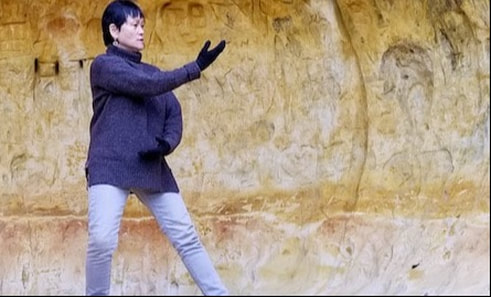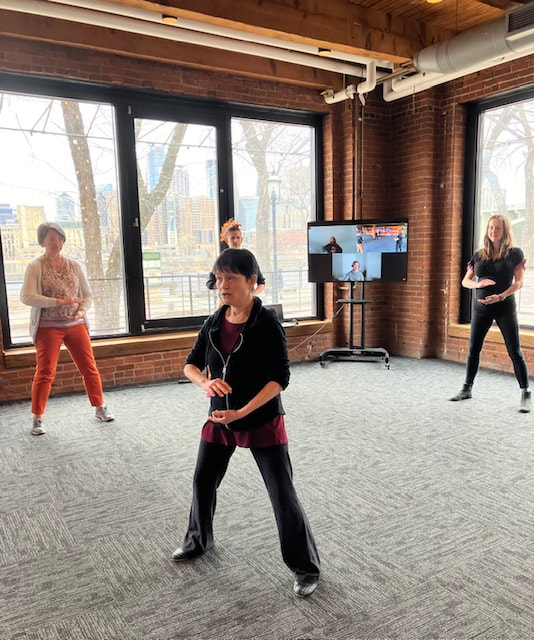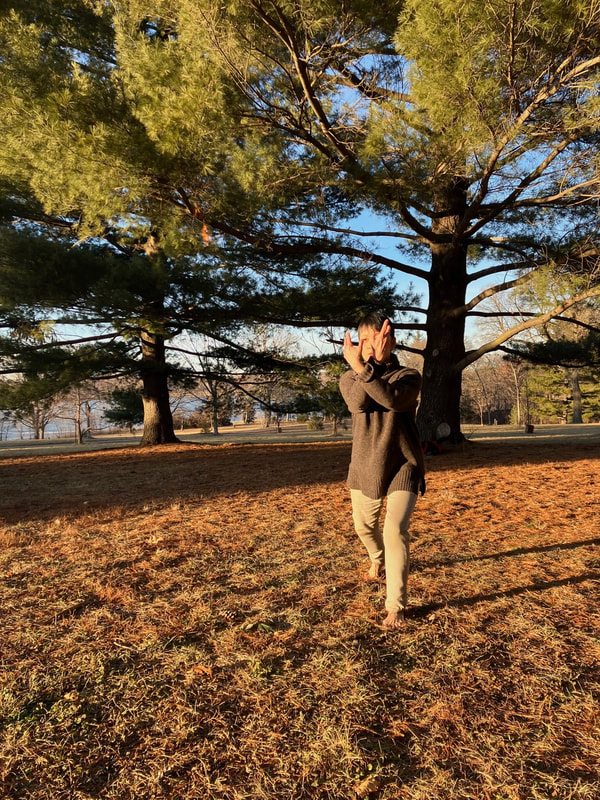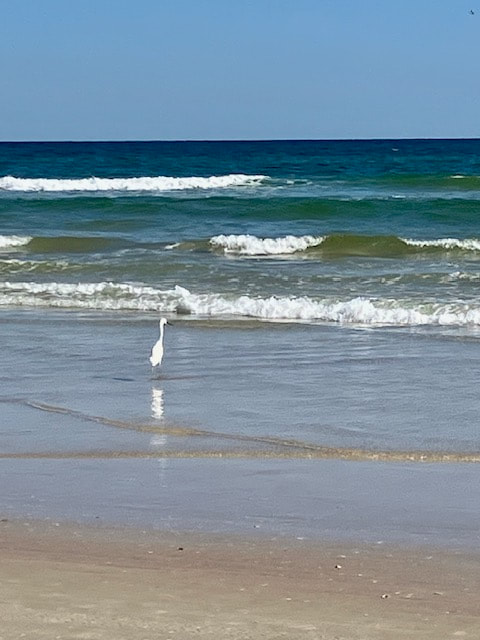|
Tai chi and qigong are practices for calming my mind. I also use another technique suggested by Marie Manuchehri. When my mind needs to be redirected to a more positive mindset I ask myself, "What if?" Instead of all the worrisome scenarios my mind can create, I imagine the hopeful outcomes. What if I regain my vitality after being sick or injured? What if everything turns out perfectly regardless of the hurdles in front of me? I've come to realize that it takes energy to worry. Why not use that same energy to create positive scenarios? Tai chi and qigong is about conserving and replenishing our energy. Anything that follows this same purpose is a good thing to practice.
0 Comments
Recently I experienced a 3 week disruption in the regular flow of my life due to injuries sustained in a harsh fall. Simultaneously I experienced a respiratory infection. It was painful to move and the viral infection kept me in bed. At that point all I could do was rest and wait for my body to heal.
As my body began to heal I had more interest to try some qigong and tai chi. I realized how quickly my body had weakened, and my vitality had diminished from lack of movement. I needed to regain my energy, my flexibility, my muscle strength, coordination, balance and release tightness overall. I knew that I did not have the strength to bike, to walk or do other physical activities, but I was able to do gentle movements and breathing of qigong and tai chi. Over a few days of doing qigong and tai chi movements, I felt more energy. My bodily aches and tightness lessened, and I realized that all my talks about how tai chi and qigong can replenish our energy when we are depleted was true. It wasn't just talk, but rather I experienced the benefits personally. I am grateful for my practice of qigong and tai chi.  One of my students introduced me to Dr. Yang's book The Root of Chinese Qigong. According to Dr. Yang here is the history of Chinese Qigong. Chinese Qigong started before 1122 BCE. Little is known about this period. The Han dynasty (206 BCE) brought about the second period known as the religious Qigong era when Buddhism from India influenced the development of Qigong in China. During the religious period Qigong was practiced by Buddhists and Daoists for religious purposes. The third Qigong era was during the Liang dynasty (502-557 CE) and saw the practice of Qigong used for martial purposes. Many styles of martial Qigong were developed based on Buddhist and Taoist principles and theories. The fourth period occurred after the overthrow of the Qing dynasty in 1911 until current times. Chinese Qigong has continued to be influenced by Qigong practices from India, Japan and other countries. In China the concept of internal energy or vital essence is referred to as Qi. In India this life sustaining energy is known as Prana and in Japan as Ki. Dr. Yang goes in-depth explaining the theory and practice of Qigong in this informative book. A spiritual friend of mine, Greg Leveille, in his book Tao Consciousness Before the Tao Te Ching and After Ramana tells the legend of the Dragon Gate from ancient China. There is a high mountain where a waterfall descends. Near the top of this mountain is the Dragon Gate. It is said that carps who can swim up this waterfall and leap through the Dragon Gate, can transform into a magnificent yellow dragon and fly to the heavens. Personally I envision the yellow dragon as a golden dragon since it is a symbol of an awaken state. We all have the potential within to awaken to our magnificent nature.
This process of awakening to my own magnificence only comes when I can calm my mind and be in the present moment. It isn't to be carried away with the currents of thoughts rushing through my mind. That only depletes my energy and brings ill health. One way that I can calm my mind and root myself in the present moment is through practicing my tai chi and qigong. This brings me joy! Sharing my practice with others also brings me joy. The organizers of World Tai Chi Day in Stillwater decided to honor the Year of the Dragon by bringing forth a dancing red dragon. Red is the color for happiness. Whenever we experience joy, we expand our energy and feel more alive. Being in the moment with this red dragon and doing tai chi with others brought me so much joy! Hopefully in the Year of the Dragon you can experience an abundance of joy and awaken to your own magnificence. Yesterday I hung out with a group of 12 architects during an Employee Caregiver Event at Cuningham Group Architecture Inc. We practiced doing qigong, which are gentle movements with slow breathing. Qigong is beneficial during times when we feel energetically depleted, stressed and needing self-care. Even this crazy winter of fluctuating temps can take a toll on our sense of well-being. Hope everyone is practicing some form of self-care.
Yesterday’s 54 degree temp in January inspired me to do some tai chi in the park at the spur of the moment. Check out my bare feet! Connecting to the earth, sunlight and fresh air helps on so many levels, even down to the cellular level.
While walking along my neighborhood lake a few years back I saw this painted rock with the message of “Choose Joy”. How is this message related to my tai chi? For me, tai chi brings me joy. It’s slow deep breath work and gentle movements relax my mind and body. I feel more energized. Doing anything out of joy will restore a person’s sense of well-being because we get positive vibes from it. When our energy is high, we attract people and situations that are also on a higher energy vibration. In this New Year I choose joy over stress and worries. Happy New Year everyone!
As we approach the shortest day of the year remember what Ralph Waldo Emerson quoted, "When it gets dark enough, you can see the stars." This quote is a reminder to me that no matter how dark and dismal life can seem, there is a way to embrace the lightness of life. Tai chi is one way by which I keep myself light mentally as well as more relaxed and healthy physically. Wishing everyone a sense of well-being during the Holidays. Happy Winter Solstice!
 In 1986 I followed an inner urge to find a healing modality. This lead me to the local tai chi qigong center where I studied for over 18 years and taught tai chi qigong for 13 years. While studying there I was immersed in what my teacher was teaching. I did not open myself up to the world of tai chi and qigong. The internet wasn’t available to broaden my learning. I think this was very helpful for my study since my mind did not get confused by what others taught or practiced. After I left the center I was missing tai chi people to connect with. I went to visit another tai chi school, but was told to not come back once the instructor heard that I was planning to teach tai chi and qigong. At the time it seemed to me that doors were closed to me. For years I wondered why some schools were so closed off. Perhaps it was because they were teaching martial arts with fighting potential so there was secrecy, allegiance to one’s own teacher, and competition among schools. My initial involvement with tai chi and qigong was for the purpose of healing emotionally and spiritually, and it remains this focus today. I was tired of battling the hardships of life. I am thankful to the teachers who came my way who taught me without feeling that I was a threat to them. They opened up my eyes to the fact that a huge tai chi qigong world existed with different styles, movements, purposes for doing tai chi and qigong. This makes sense to me because there are so many different people with different focuses and needs, so there needs to be a wide range of teachers and ways to approach tai chi and qigong. My way of teaching might not meet the interest or needs of everyone. What I say to people who are exploring tai chi and qigong is to try it. If it doesn’t benefit you, go seek another modality or another teacher. There is no one way, no allegiance to a teacher, no right or wrong. Open yourself to possibilities. Enjoy your search and be true to yourself! How do you let go of sorrow, loss, expectations and stress? Recently I went to the beach. It was a means of self-care. When I can't go to an actual beach, doing my tai chi often leaves me feeling like I did. Treat yourself to a self-care day!
|
AuthorI am filled with wonder, gratitude and awe for the journey I have traveled and for the teachers I have meet along the way. Archives
July 2024
Categories |




















 RSS Feed
RSS Feed